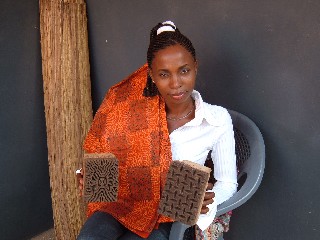
Molten wax is applied using a firm sponge-like stamp with the the desired pattern cut in the bottom. |
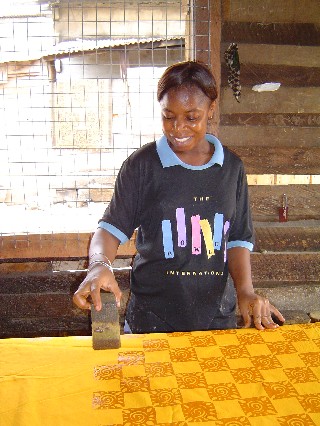
|
For those like Elder Markham who don't know much about batik, here is a short explanation. Batiking is a process for coloring cloth that uses wax to block the dye from some parts of the cloth. It is popular in Southeast Asia and Africa. Wax is applied to parts of the material, then the whole piece is dyed, dried, and boiled to remove the wax. Places where there was wax remain the original color, while the rest is the new color. Batiking is labor intensive but produces uniquely colored fabrics. Batik artists also use the process to make wall hangings.
Sister Markham likes the fabric and loves the batik art. She has sent pictures and some gifts to our children. Steev, the engineer said, "Gee Mom, you've been in Africa too long." Corinne, who loves art said, "Please send me more." Carolyn, a creative person, married to Dave the engineer, and mother of four young children said she loves the batik table cloth she received as a birthday gift. There is enough residue wax that when the kids spill anything, it doesn't soak in or even run off. It just beads up for easy cleanup.
Sister Markham visited a business that makes and sells batik fabric. Here are some pictures.

Molten wax is applied using a firm sponge-like stamp with the the desired pattern cut in the bottom. |

|
Here is a movie of wax application.
This video is about 700kb; be patient for it to load.
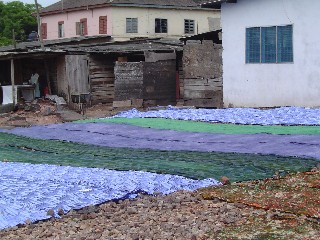
|
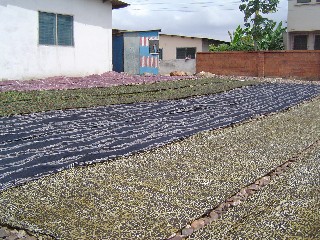
|
|
In this shop the cloth is dried on a bed of potato sized rocks. |
These fabrics are drying after being 'batiked' and dyed. |
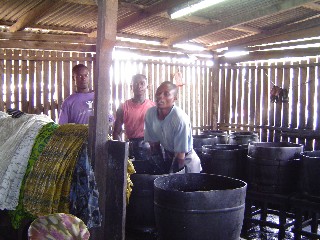
These men are dyeing the cloth in large tubs. There is an amazing amount of color science required in the process to get the desired effects. This is all learned on-the-job and handed down from experienced batikers. |
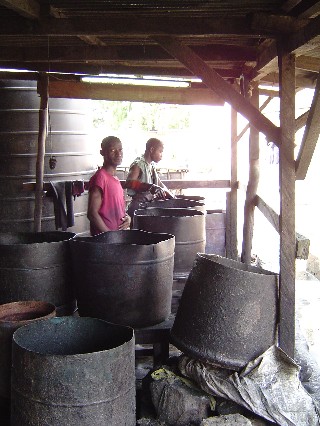
|
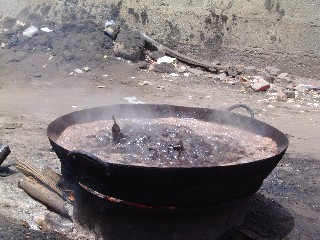
|
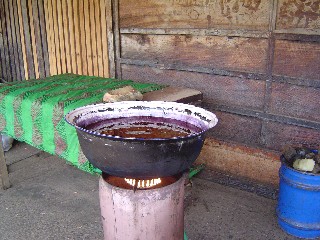
|
|
The batiked cloth is boiled to remove the wax. Wax is skimmed from the boiling vats and collected in tubs to boil out all water. |
The recovered wax is then set on a burner to keep it very hot and reapplied to another piece of fabric. |
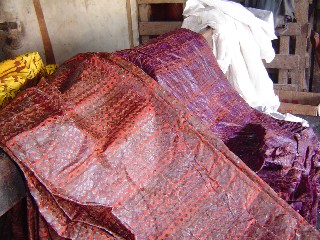
|
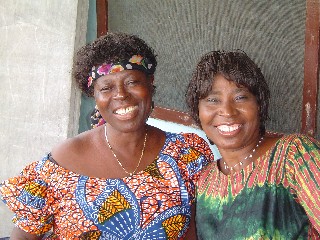
|
|
These pieces have been dried after the second pass through the dye vats. The next step is wax recovery. |
The woman on the left is Bertha who owns this business. Her niece Pearl is on the right. |

Last Week's Production on the Sales Rack
It is hard to believe this beautiful material was all made at these facilities.
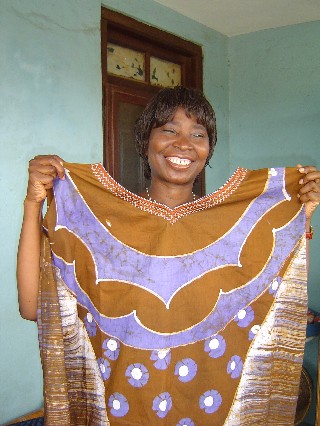
|
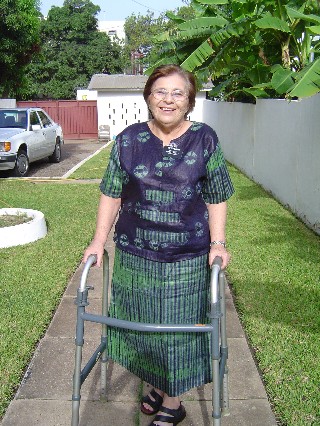
|
|
Batik (not applique) dress for sale at the shop |
While recovering from a broken pelvis, Sister Lords models a new batik dress. |
Sister Markham loves the Batik art---Wall Hangings, Table Cloths, etc.
| To make batik art, the artist must visualize the work like a photo negative, paint on the wax and then dye the cloth. When the wax is removed the finished art can be seen. Adding more colors gets very complicated. |
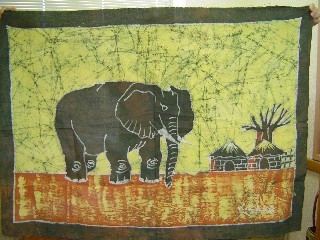
|
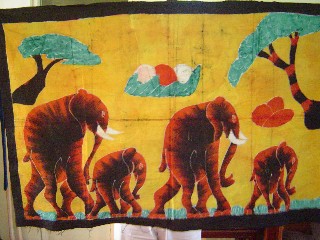
|
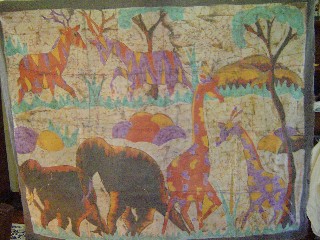
|
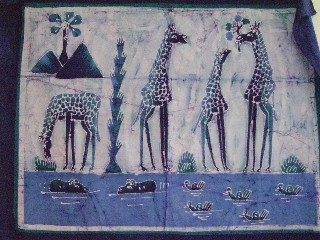
|
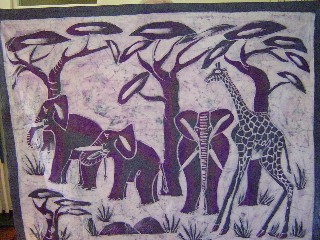
|
|
The first batik art Sister Markham purchased, and still a favorite. |
Elephants and a Giraffe |
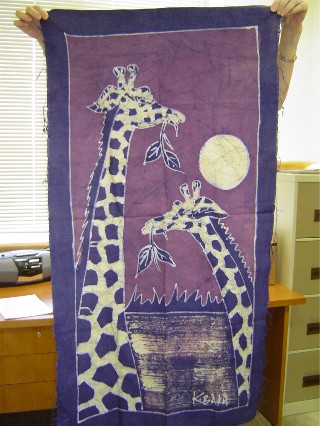
|
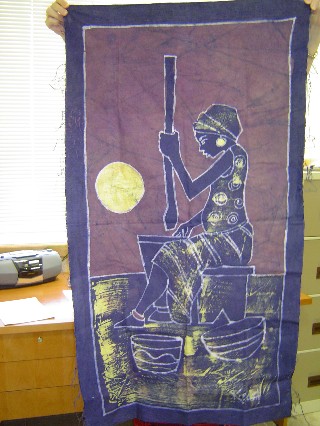
|
|
The local artist who did these says his art is from dreams. |
Fufu by Moonlight is Elder Markham's favorite. |
Click this button to return to the previous page.